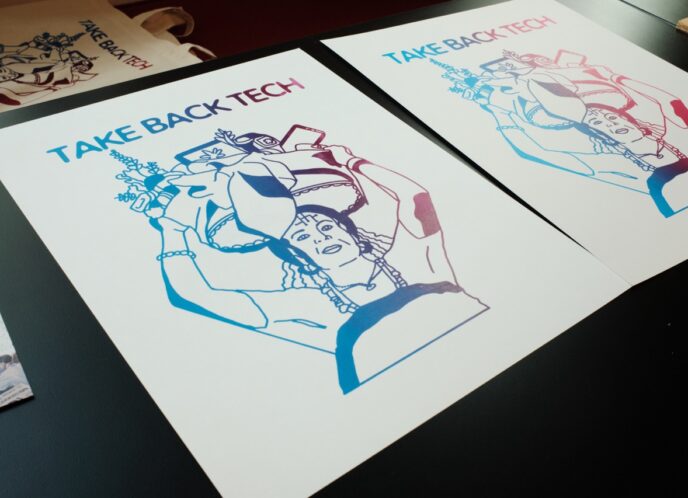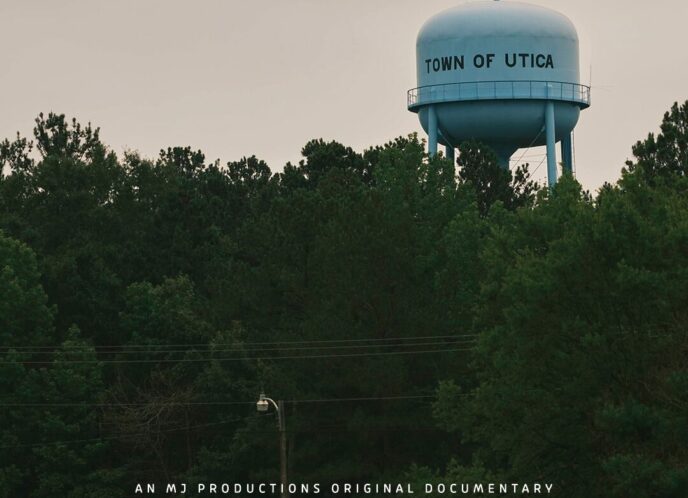For Center for Media Center, art, culture and movement building for social change is inextricably linked and has been central to the fights CMJ has championed. Art + Culture + Media Rights & Access equals a portal for discovery and change, and for the artists working for social justice, art is as much about power as it is the craft.
Malkia Cyril, executive director of CMJ says:
“Music and art is the medium to filter change. Because of the emotion that art can evoke, it holds the power to remind us of the struggle, link us to fate, call out history, and provide context for change. It’s one of best framing tools for the disenfranchised and is a critical weapon in the fight for media rights and access.
Artists in particular have a self-interest in ensuring that media and cultural policy is fair. When the media system is not accessible, affordable, and accountable, the rights of artists and the freedom and forums with which to make their art is greatly reduced.”
Music artist Erin Mckeown is the personification of the ideals on which CMJ and our signature project, the Media Action Grassroots Network (MAG-Net), is premised on. For years, Erin’s music and activism has elevated issues of media rights and access through cultural organizing and communications power.
This year, through PledgeMusic, Erin committed to raising money for MAG-Net. For those unfamiliar, PledgeMusic offers artists, the opportunity to fund recordings, touring or any other band associated activity, whilst also bringing them closer to their fans, and raising for money for social causes that speak most strongly to them. We’re honored that our work has moved her to act in the same way that her music has moved us and countless others.
Via email, Erin graciously agreed to answer a few questions about why she’s picked MAG-Net as her PledgeMusic organization, and what media rights and access means to her as an individual and an artist.
Read on for our interview with Erin:
CMJ: How is the Media Action Grassroots Network connected to your work, why is it important right now?
 EM: For a number of years, I have been trying to tie together several of my passions: i get really fired up about social justice. I love to play music and have built a wonderful, loyal, smart group of listeners. And I really love technology and want to see it used well. This makes Media Action Grassroots Network a natural fit for me. and, as I am sure MAG-Net and i would both say, we’re at a crucial point in time with the intersection of these issues. In both public and private ways, media and its accompanying technologies are being used to further current systems of inequality. But the fantastic part is those same tools are available for us to use to challenge and change these systems.
EM: For a number of years, I have been trying to tie together several of my passions: i get really fired up about social justice. I love to play music and have built a wonderful, loyal, smart group of listeners. And I really love technology and want to see it used well. This makes Media Action Grassroots Network a natural fit for me. and, as I am sure MAG-Net and i would both say, we’re at a crucial point in time with the intersection of these issues. In both public and private ways, media and its accompanying technologies are being used to further current systems of inequality. But the fantastic part is those same tools are available for us to use to challenge and change these systems.
The music industry is experiencing a ton of change, quickly. This is not news to anyone. Technology is playing a big part in this change and artists are using it to create new strategies to continue making their art. Fan-funding through sites like PledgeMusic.com is a great example of this, and it’s made completely possible by new media. I didn’t want to do an album fundraiser and not try to connect it explicitly to these larger issues. When you support my new album, I also want you to be supporting the myriad ways that all kinds of folks are using new media for change.
CMJ: Why is this partnership between an artist and the network important and how did it come about?
EM: It’s the basic principle of community, right? collaborate, broaden, and mutually inspire. as an artist, I feel like my job is to be a conduit and archivist (of a sort) for human experiences. I translate these experiences into tangible pieces of sound that I can share with my established audience or with new folks I meet through other networks. But it also works in reverse! A network of activists like MAG-Net feeds me. I am so inspired by what members are doing that it drives me to expression. When you add music audiences to activism networks, then you’re really doing something useful.
How I found MAG-Net is a nice extension of this principle. I had done some work with some of your member and advisory orgs, Media Literacy Project and Free Press- without being aware of MAG-Net. I’ve also been involved for a long time with DC-based Future of Music Coalition. All I had to do was ask them who was doing the best work on media and social justice, and they pointed me to MAG-Net.
CMJ: Beyond this specific partnership, what is the role of musicians and artists in movements for social change?
EM: I think musicians and artists have a unique ability to translate and highlight the emotional aspects of this work. So much of this work can be intellectual, requiring us to interact with government or policy or law. This is important. But it’s also important to feel, and I think musicians and artists can help us do that along with the more mechanical aspects of change. There is plenty to be said, but there is plenty that can’t be said and needs to be sung.
CMJ: What are some of the experiences or people that have shaped your work and art?
EM: I can think of so many, but i’ll highlight this one: In the spring of 2011, Future of Music Coalition and another org I work a lot with, Air Traffic Control, brought a group of artists to tucson for a 3 day intensive workshop around immigration issues. We met with Rep. Raul Grijalva, Andrea Quijada of the Media Literacy Project, and many more amazing local folks. We also took a bus ride down to nogales AZ to witness the wall that’s being built between the US and Mexico.
Seeing the wall, walking along it, hearing stories from local folks about the way the wall has impacted them, was incredibly moving. Also, the way the wall looked was really striking to me: a scar across the desert. violent, out of place, a marker of wrong.
When I came home from the trip, I had to try to write about this image. I ended up writing a song that will appear on my new record, the one we’re raising money for with the pledge campaign. The song is called “the jailer”, and it describes the type of person that builds this wall, and how building walls like this hurt everyone involved.
I’m also collaborating with two of the other artists on the trip, Martin Perna (antibalas, ocote soul) and Stephen Brackett (flobots), to do a remix of the song.
CMJ: Besides this partnership with MAG-Net, what is another example of creative action and cultural organizing that is inspiring you right now?
EM: There are three projects i would point to. cashmusic.org builds open source web tools for artists. They’re a non-profit out of portland OR, and what they are offering is radical in a world where so much knowledge is proprietary. In Denver, the flobots have really stepped up with flobots.org which is an umbrella for their various community and art endeavors. And the cellist Ben Sollee has spent the last several years perfecting his bike touring skills. He’s partnered with several great orgs to sponsor 2-3 week tours where he and his crew use only their bikes to get themselves, their instruments, and their merchandise from show to show.



